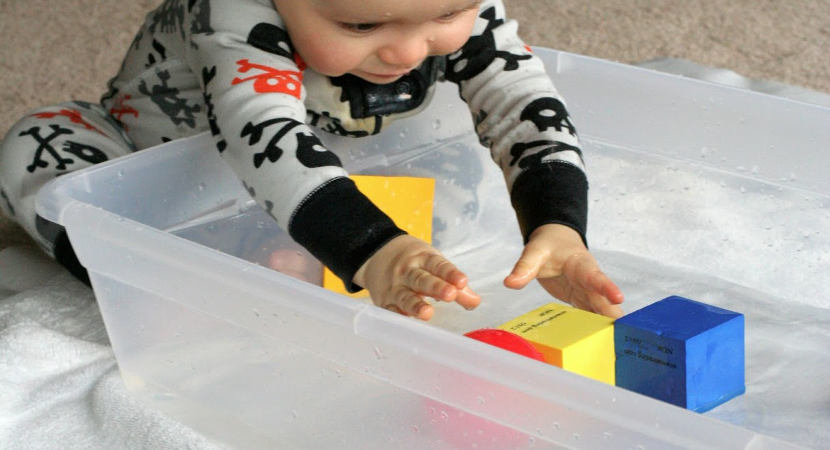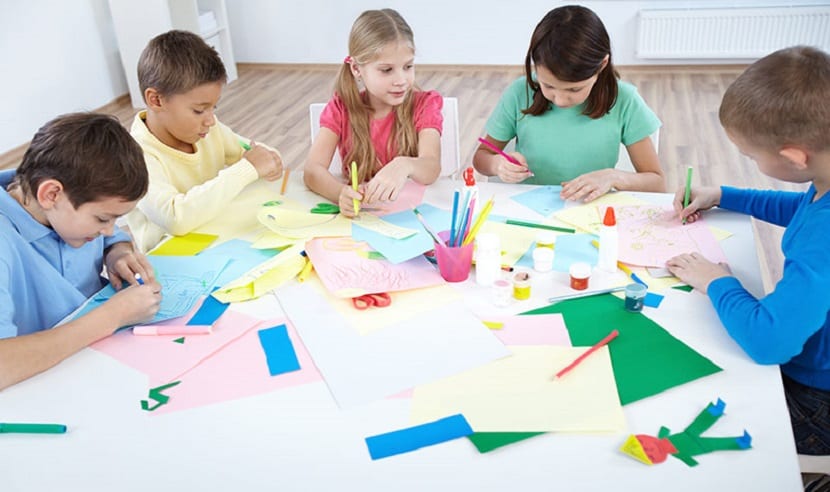
the cmanual eye coordination (eye-hand) is a fundamental ability for people. The greater the baby's ability to control his hands and fingers, the more experiences he will have and the more his possibilities of relating to his environment will increase, as well as allowing him to do new things, be more independent, etc. Furthermore, the improvement of hand-eye coordination is directly related to the development of graphomotor skills.
Today we are going to see a series of games and recreational activities What we can do with children at home -or anywhere- to help them improve their level of manual eye coordination as well as their perception of themselves.
Body identification game
This game consists of identifying different parts of the body with the eyes closed. To play, the children move the parts of the body they want without opening their eyes. It is interesting to move different segments, not only those related to the arms, so that they can distinguish everything.
This game can be completed by adding questions for the children to say what the part of the body that is moving is for or by sending the motion proposal in the form of a riddle - telling the use for the children to move the part of the body that is used for it- .
Merchandise transports
This game consists of carrying plastic cups or other containers filled with water from one place to another, avoiding obstacles. The goal is to reach the destination without spilling the water. To make it easier, you can fill the glasses only halfway, and add more and more water.
You can also put a large container at the end and propose as a goal to fill it with the small glass, so that you have to make more trips. Thus, the more water that falls, the more times it will be necessary to fetch water.

Jumping letters
To make this game we need cards, cards or something similar, which we will place face down on a table. The object of the game is to turn over as many cards as possible by punching the table. With this, the child will develop the strength of his hand. In very young children, it should be done with both the right and the left, since laterality - dominance of one hand or the other - takes time to define itself.
Button race
Buttoning and unbuttoning a shirt or school bib is a task that requires great hand-eye coordination, but one that children don't always like. In race format, the activity of fastening and unbuttoning can be much more interesting. It's not about winning, but about the motivation to do it - the faster the better. This task can be introduced within a game circuit.
Row small objects
Placing small objects in a row is an activity that requires a lot of skill, first to pick up the small object (tokens, buttons, coins, figurines, vegetables, etc.), then to place it without moving the others. Using buttons or small tiles we can propose to the child to make a row that reaches a certain point. It is an ideal activity to combine with other games.
Piled up hands
To play, several people stand in a circle. In order, each one places a hand in the center, in order of placement. When everyone is finished, the other hand is placed on top. When they are all piled up they are removed. To complicate it, you can set a rhythm (taking advantage of music, for example).
Other games

Other games that help the development of coordination and the independence of the movement of the fingers, as well as the development of strength, are the traditional Chinese shadows and puppet games, as well as plastic activities - doodle, finger painting , etc.) and crafts (play dough, making balls, etc.). Playing with clay, dirt, and sand also helps improve hand-eye coordination, as well as pin games.
We can't forget about building games and puzzles. In this case, it is advisable to always use materials adapted to their age and size.
Other simple activities, such as putting things in and taking things out of a box, putting your hands in bags full of things and playing with what is inside, or playing picking up toys are simple activities that are very beneficial for developing coordination. Of course, eating with your hands is a very important activity for children.
Hello friends |||| In these times of pandemic and where we as a physical education teacher must look for other alternatives that contribute to the development of the child, it seems to me that the exercises-games previously exposed will be of great help in my work as a teacher. thanks and congratulations.